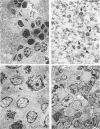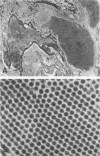Abstract
Five epidemics of diffuse, poorly differentiated lymphocytic, immunoblastic, and plasmacytoid lymphoma induced by an infectious, horizontally transmitting viroidlike agent have occurred in two hamster facilities. Incidence summaries and pathologic characteristics of the lymphomas induced in LSH and LVG hamsters are presented. An elevated leukocyte count with a marked increase in neutrophils and a significant decrease in small mononuclear lymphocytes was detected in 5-week-old but not in 10- or 25-week-old LVG hamsters born in the facility contaminated with the lymphoma-inducing agent. Three-week-old LVG hamsters exposed to the contaminated facility showed no similar hematologic change at 5 weeks of age or 5 weeks of exposure. Several associated syndromes, including an intussusception disease, pyelonephritis, inflammatory bowel disease, and body warts associated with the presence of the causative viroidlike agent in the contaminated colonies are described. Details of the epidemiology of the disease, karyology, viral studies, and correlation with several epidemics in other laboratories are presented.
Full text
PDF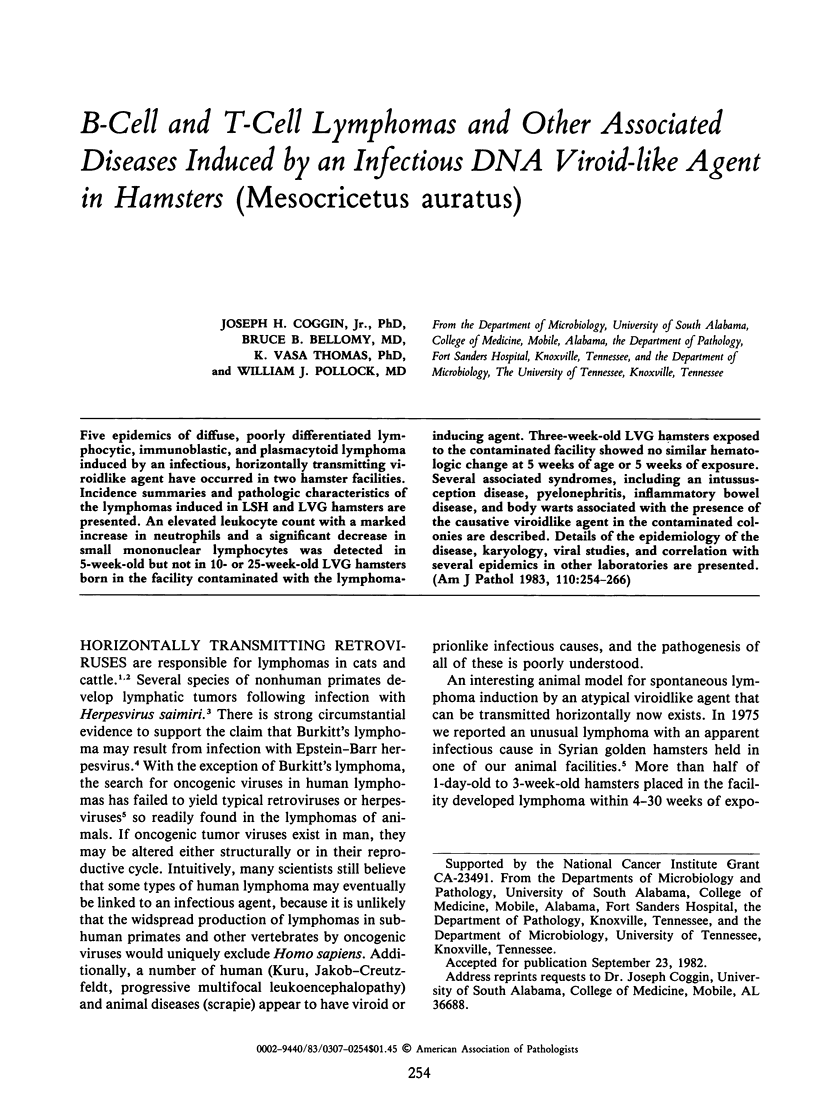
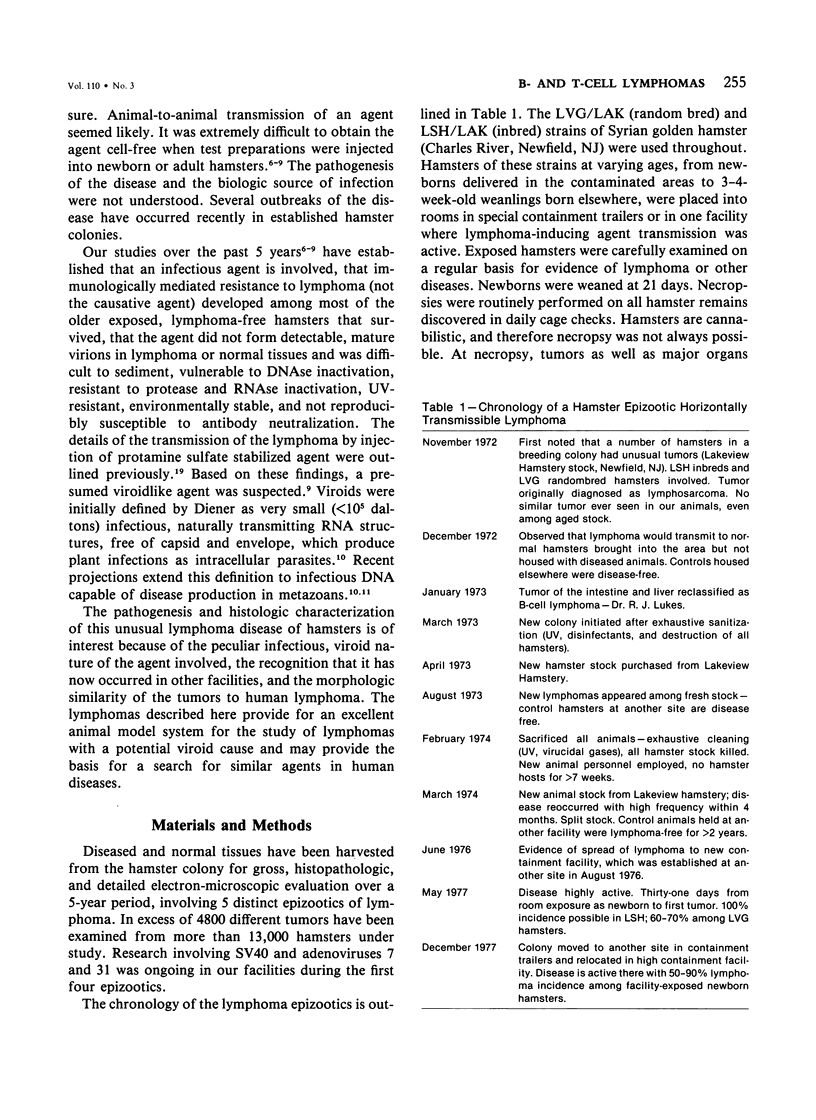
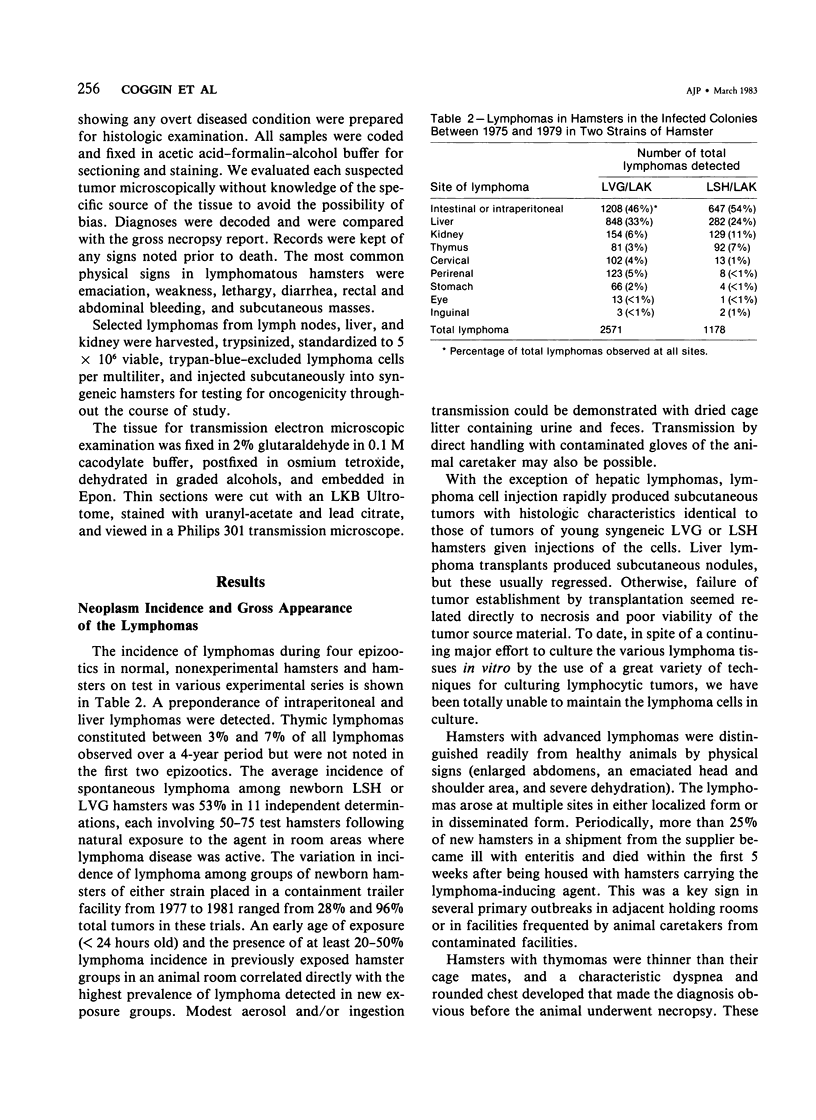
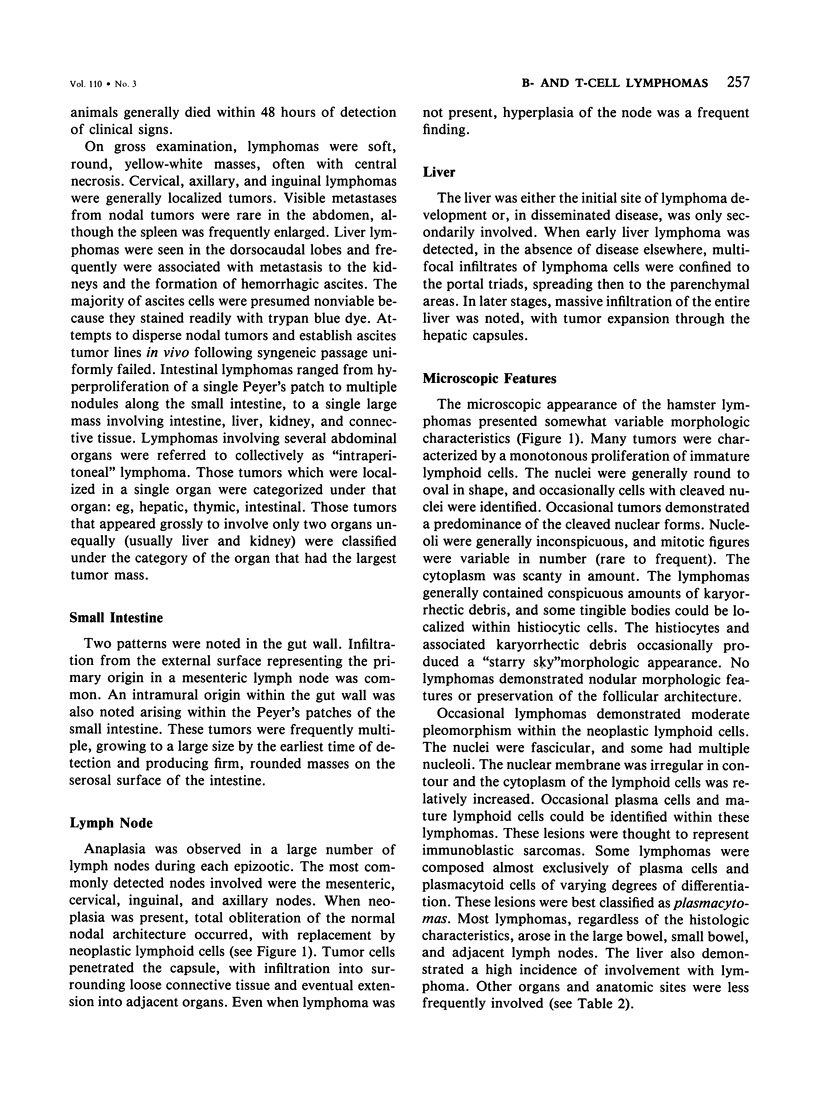
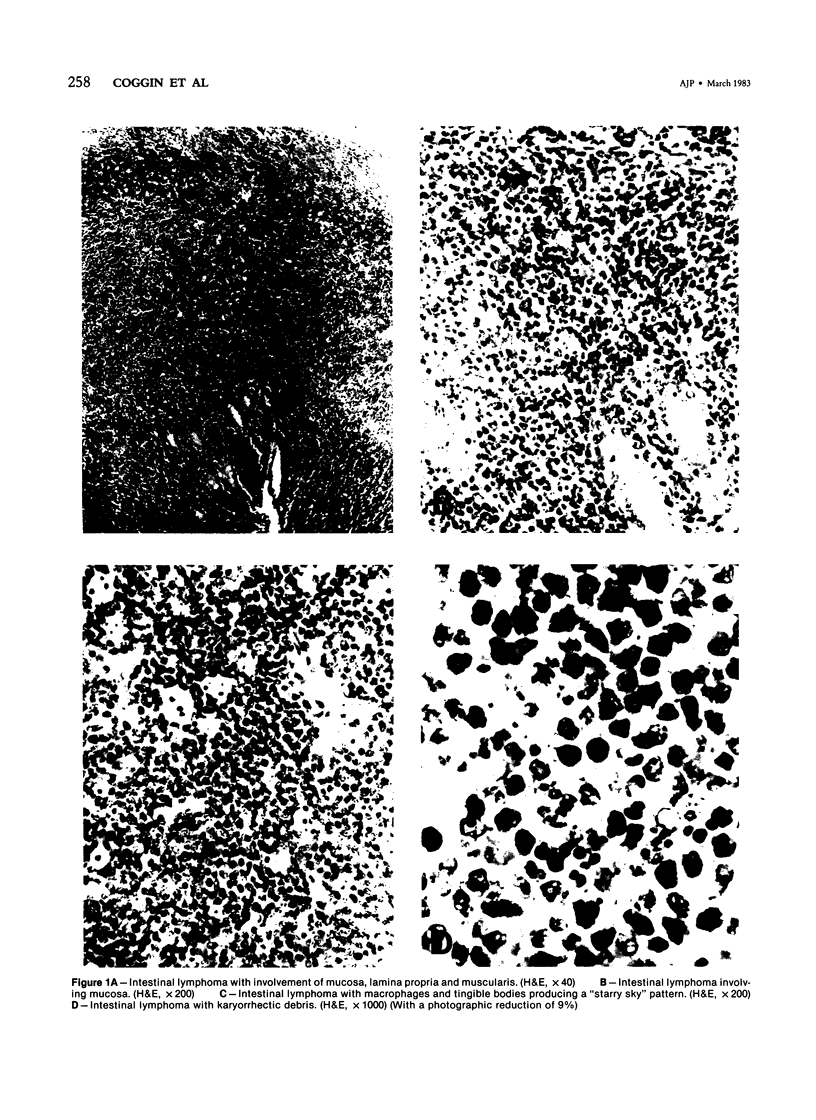
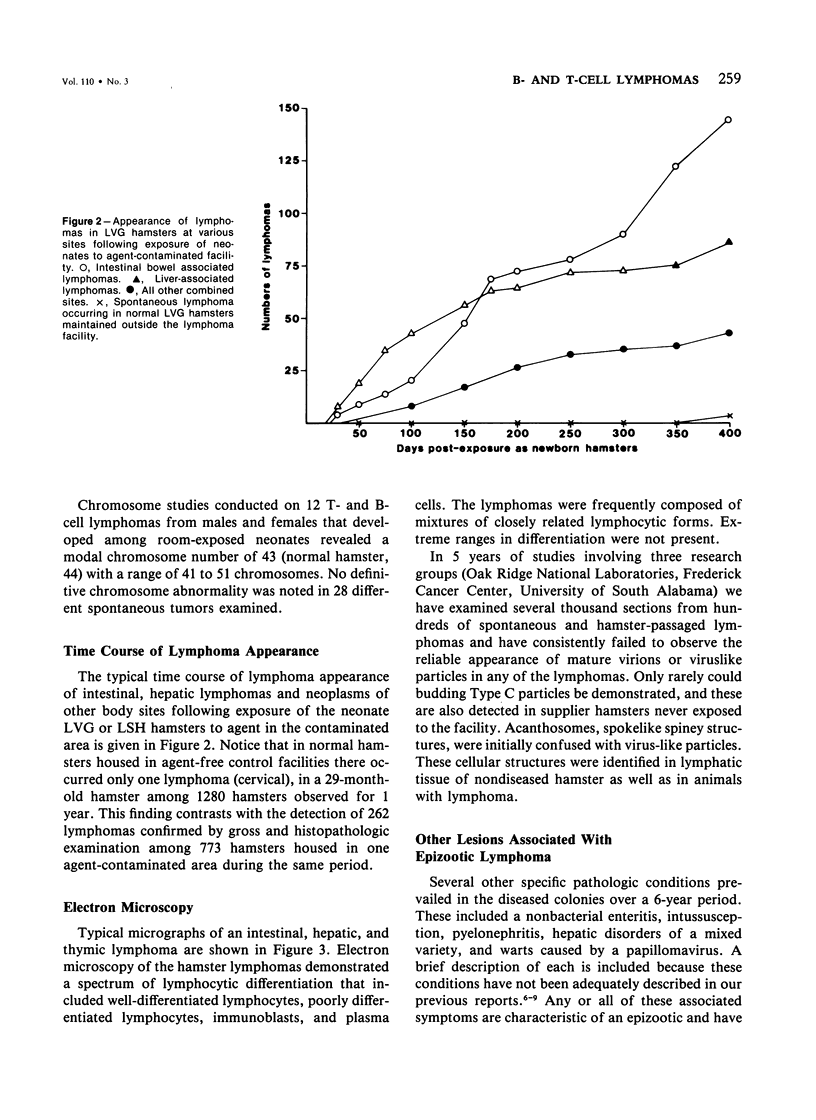
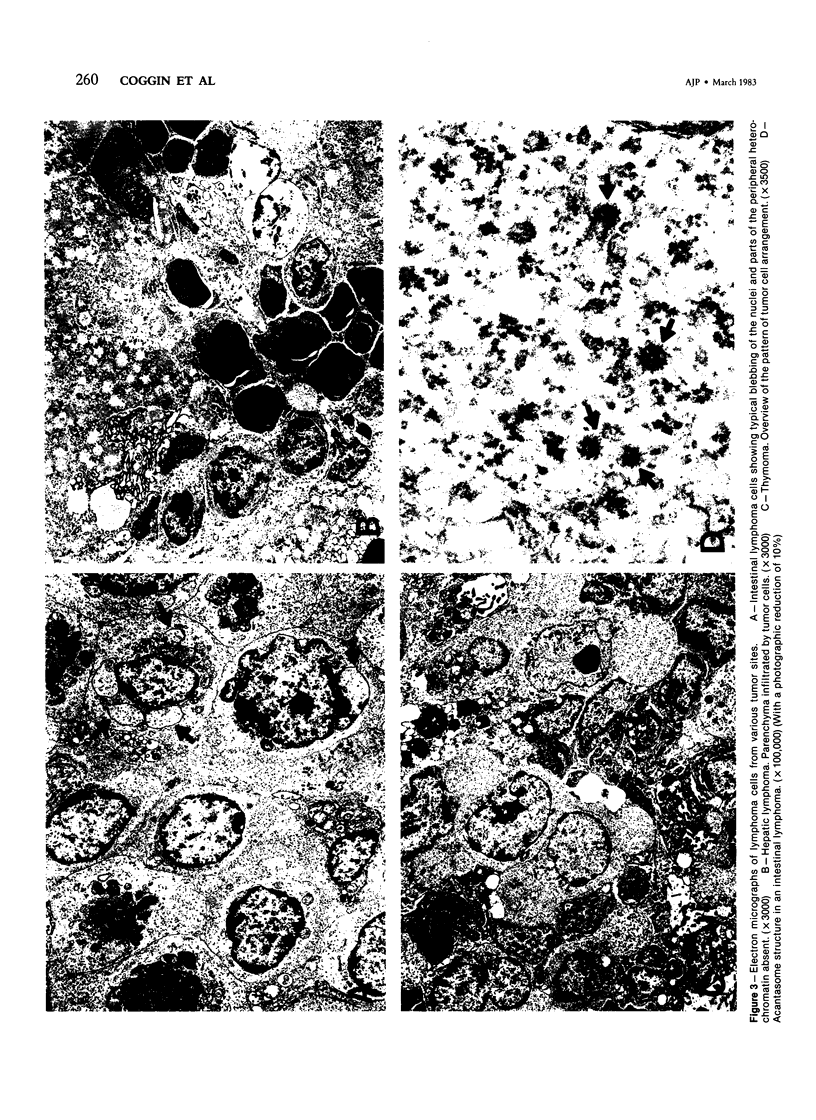
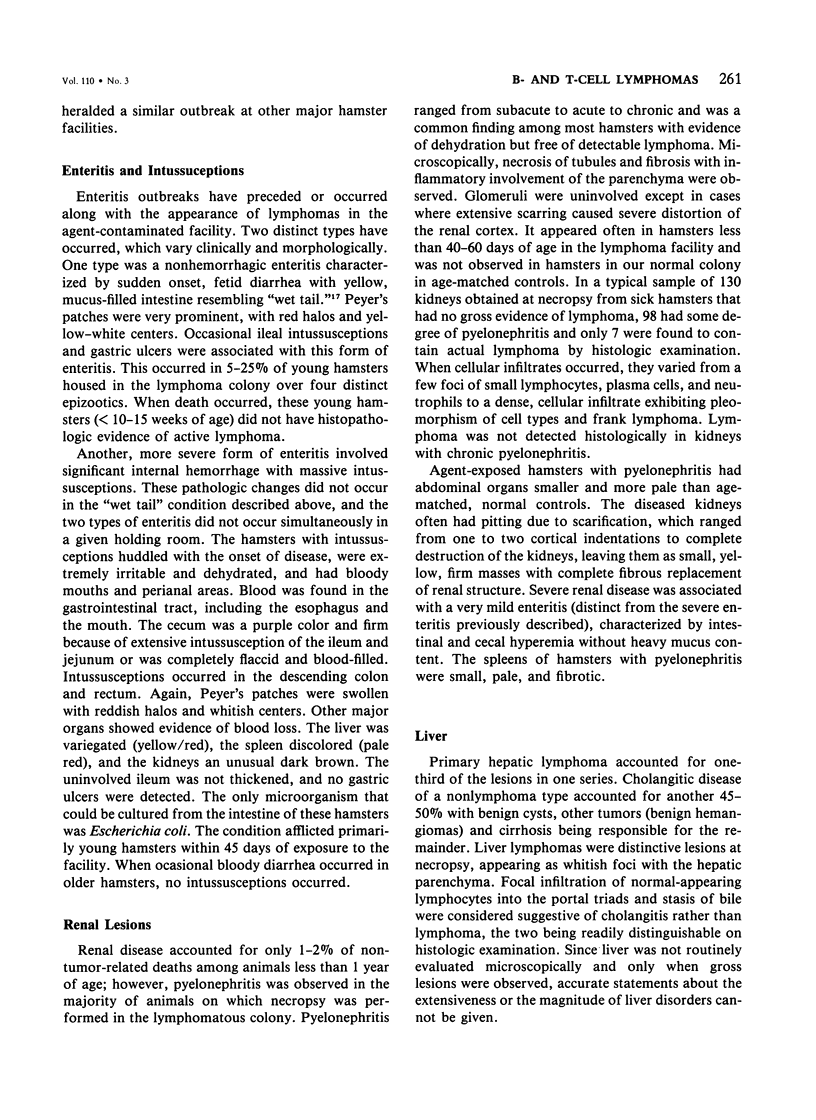
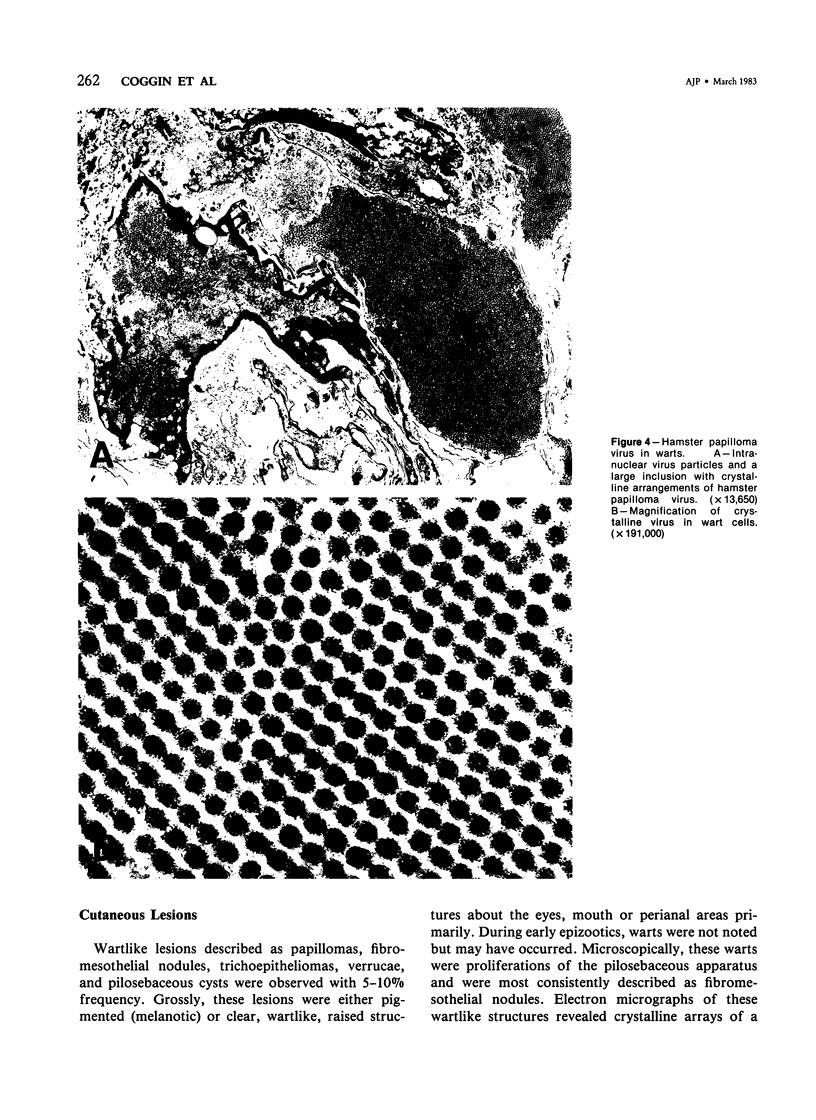
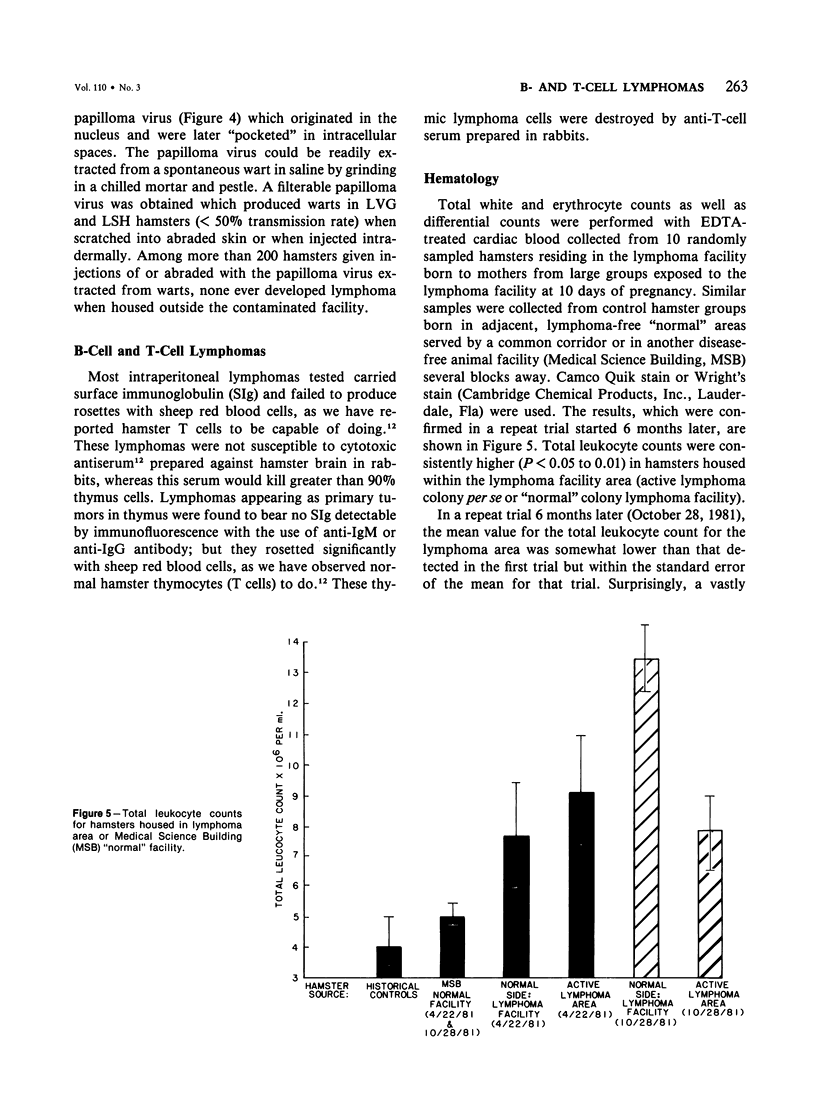
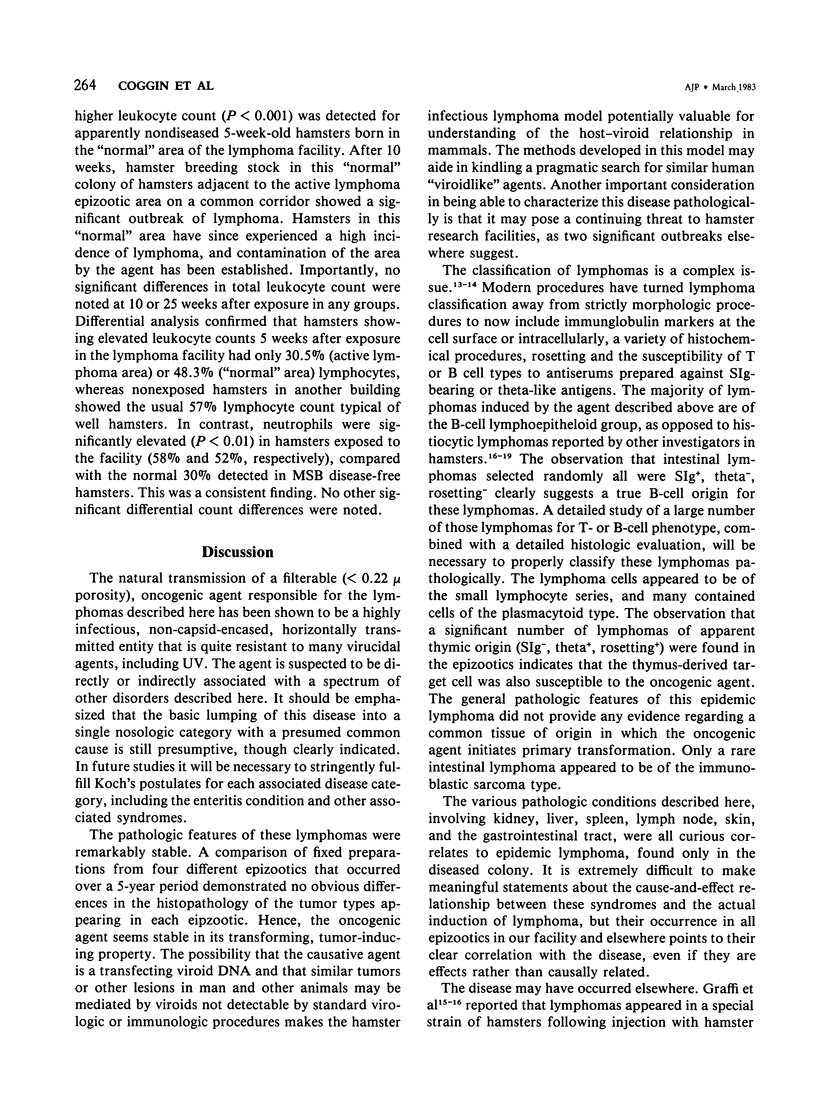
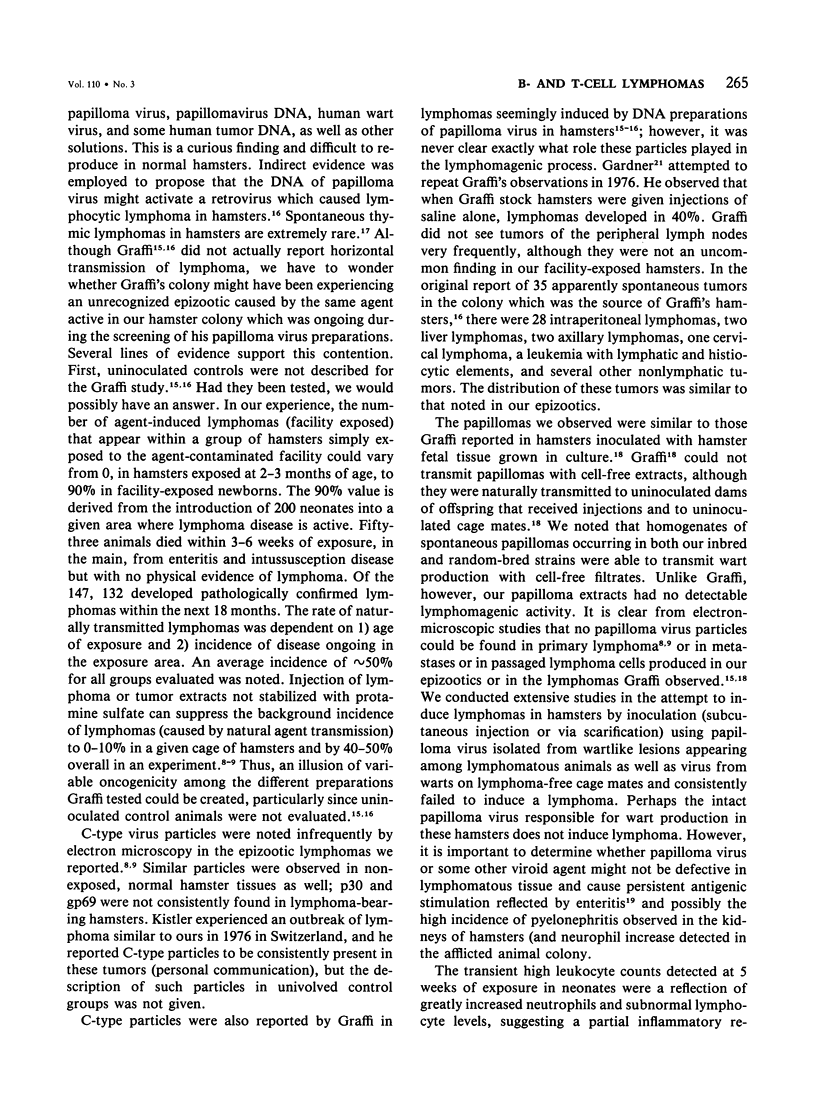
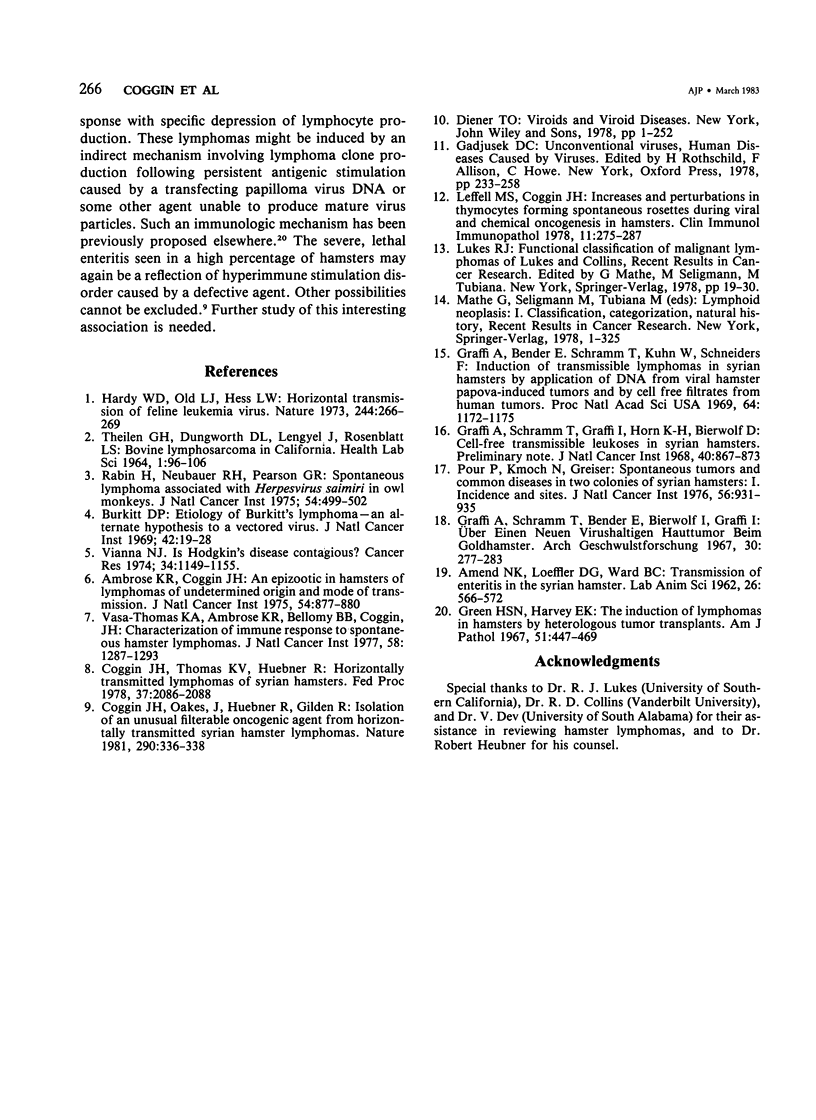
Images in this article
Selected References
These references are in PubMed. This may not be the complete list of references from this article.
- Ambrose K. R., Coggin J. H., Jr An epizootic in hamsters of lymphomas of undetermined origin and mode of transmission. J Natl Cancer Inst. 1975 Apr;54(4):877–880. [PubMed] [Google Scholar]
- Amend N. K., Loeffler D. G., Ward B. C., Van Hoosier G. L., Jr Transmission of enteritis in the Syrian hamster. Lab Anim Sci. 1976 Aug;26(4):566–572. [PubMed] [Google Scholar]
- Burkitt D. P. Etiology of Burkitt's lymphoma--an alternative hypothesis to a vectored virus. J Natl Cancer Inst. 1969 Jan;42(1):19–28. [PubMed] [Google Scholar]
- Coggin J. H., Jr, Oakes J. E., Huebner R. J., Gilden R. Unusual filterable oncogenic agent isolated from horizontally transmitted Syrian hamster lymphomas. Nature. 1981 Mar 26;290(5804):336–338. doi: 10.1038/290336a0. [DOI] [PubMed] [Google Scholar]
- Coggin J. H., Jr, Thomas K. V., Huebner R. Horizontally transmitted lymphomas of Syrian hamsters. Fed Proc. 1978 May 15;37(7):2086–2088. [PubMed] [Google Scholar]
- Graffi A., Bender E., Schramm T., Kuhn W., Schneiders F. Induction of transmissible lymphomas in Syrian hamsters by application of DNA from viral hamster papovavirus-induced tumors and by cell-free filtrates from human tumors. Proc Natl Acad Sci U S A. 1969 Dec;64(4):1172–1175. doi: 10.1073/pnas.64.4.1172. [DOI] [PMC free article] [PubMed] [Google Scholar]
- Graffi A., Schramm T., Bender E., Bierwolf D., Graffi I. Uber einen neuen virushaltigen Hauttumor beim Goldhamster. Arch Geschwulstforsch. 1967;30(4):277–283. [PubMed] [Google Scholar]
- Graffi A., Schramm T., Graffi I., Bierwolf D., Bender E. Virus-associated skin tumors of the Syrian hamster: preliminary note. J Natl Cancer Inst. 1968 Apr;40(4):867–873. [PubMed] [Google Scholar]
- Greene H. S., Harvey E. K. The induction of lymphomas in hamsters by heterologus tumor transplants. Am J Pathol. 1967 Oct;51(4):447–469. [PMC free article] [PubMed] [Google Scholar]
- Hardy W. D., Jr, Old L. J., Hess P. W., Essex M., Cotter S. Horizontal transmission of feline leukaemia virus. Nature. 1973 Aug 3;244(5414):266–269. doi: 10.1038/244266a0. [DOI] [PubMed] [Google Scholar]
- Leffell M. S., Coggin J. H., Jr Increases and perturbations in thymocytes forming spontaneous rosettes during viral and chemical oncogenesis in hamsters. Clin Immunol Immunopathol. 1978 Nov;11(3):275–287. doi: 10.1016/0090-1229(78)90051-x. [DOI] [PubMed] [Google Scholar]
- Lukes R. J. Functional classification of malignant lymphoma of Lukes and Collins. Recent Results Cancer Res. 1978;64:19–30. doi: 10.1007/978-3-642-81246-0_3. [DOI] [PubMed] [Google Scholar]
- Pour P., Kmoch N., Greiser E., Mohr U., Althoff J., Cardesa A. Spontaneous tumors and common diseases in two colonies of Syrian hamsters. I. Incidence and sites. J Natl Cancer Inst. 1976 May;56(5):931–935. doi: 10.1093/jnci/56.5.931. [DOI] [PubMed] [Google Scholar]
- Rabin H., Neubauer R. H., Pearson G. R., Cicmanec J. L., Wallen W. C., Loeb W. F., Valerio M. G. Spontaneous lymphoma associated with Herpesvirus saimiri in owl monkeys. J Natl Cancer Inst. 1975 Feb;54(2):499–502. [PubMed] [Google Scholar]
- Vasa-Thomas K. A., Ambrose K. R., Bellomy B. B., Coggin J. H., Jr Characterization of immune responses to spontaneous hamster lymphomas. J Natl Cancer Inst. 1977 May;58(5):1287–1293. doi: 10.1093/jnci/58.5.1287. [DOI] [PubMed] [Google Scholar]
- Vianna N. J. Is Hodgkin's disease infectious? Cancer Res. 1974 May;34(5):1149–1155. [PubMed] [Google Scholar]




